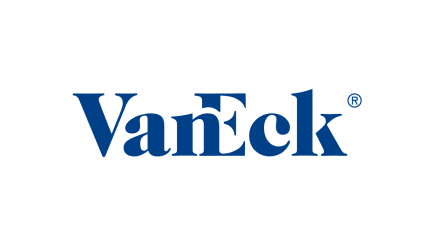Jan van Eck
Chief Executive Officer
In our 2023 outlook, we said it would be a “sideways” year for equities. Our base case was that against a backdrop of tight monetary policy, no new fiscal spending, and a weak global economy, investors would be left waiting for the “rip” in equity markets that never comes. Then we saw stocks come out of the gate hot in January, but a closer look shows that many of the factors driving that rally are temporary. We’re holding to our view that markets are in for a sideways year. Here’s a quick update on our outlook, including a summary of the under-reported phenomenon we are calling “phantom quantitative tightening.”
Phantom Quantitative Tightening? Why Stocks Rallied in January
Heading into 2023, consensus thinking seemed to be that we were just one piece of good news away from a Federal Reserve pivot, and a subsequent rally in stocks. Yet, stocks rallied in January with no major news as a catalyst, so what exactly is going on?
The short answer is that there was a surge of money supply globally at year-end that offset the Fed’s tightening. However, those forces—U.S. Treasury buying of bonds, Japan QE, China money supply growth—are in our view unsustainable. So, we maintain our sideways view.
Here are the three main factors in the January melt-up:
- For every dollar that the Fed was selling in bonds, the Treasury Department was buying. This mean that quantitative tightening in the U.S. was not actually as tight as one might think.
Phantom Quantitative Tightening?
Source: St. Louis Federal Reserve. Data as of January 2023. Quantitative tightening (QT) refers to monetary policies that contract, or reduce, the Federal Reserve System (Fed) balance sheet. This process is also known as balance sheet normalization. In other words, the Fed (or any central bank) shrinks its monetary reserves by either selling Treasuries (government bonds) or letting them mature and removing them from its cash balances. This removes liquidity, or money, from financial markets. It is the opposite of quantitative easing (QE).
- China was expanding its money supply to stimulate its economy, and this led the global money supply to increase sharply heading into the beginning of 2023.
Global Money Supply Surged
Source: Bloomberg. Data as of 2/28/2023. M2 measures the money supply that includes cash, checking deposits, and easily convertible near money.
- The Bank of Japan expanded its balance sheet by $614B since the start of December 2022, far outstripping other quantitative tightening, which was $357B by U.S., ECB and England.
The combination of these factors led to the injection of a lot of money into the world economy and a reprieve from “tight” monetary conditions, which subsequently supported the equity rally in January. The question investors need to ask is: will these conditions last? We don’t think they will.
In the U.S., the Treasury’s buying of bonds is not likely to continue at this pace. The growth in Chinese money supply and pace of quantitative easing in Japan are also not sustainable. In our view, a more likely scenario is that the bleak economic picture catches up with equity markets, once investors realize looser monetary policy conditions are temporary.
Global Economic Outlook Remains Soft
The world economy is weak. Europe, in particular, is one of the world’s “weak links” in part due to the impact of the Russia/Ukraine war on energy prices and transportation networks (bottlenecks that are not expected to disappear any time soon). Meanwhile, we expect flat growth in the U.S., with corporate earnings remaining under pressure.
The (Not So Bright) Profit Outlook
Change in 2023 EPS Estimates
Source: Credit Suisse Research. Published in December Navigator; December 5, 2022. An earnings estimate is the estimate of a firm’s earnings per share (EPS) for the upcoming quarter or fiscal year and is reported by an analyst. Past performance is not indicative of future results.
Stay the Course: We Continue to Favor Bonds Over Equities
With higher income and the ability to withstand any unexpected spikes in interest rates, bonds continue to offer attractive value compared to stocks. On the equity front, we think small- and mid-cap stocks look relatively attractive. With valuations at 20–year lows relative to large caps, now may be a compelling time for investors to consider these stocks.
But overall, we believe that the traditional “60/40” portfolio should be more like “40/60” in favor of bonds in the current market environment.
To receive more Investment Outlook insights, sign up in our subscription center.
Originally published 06 March 2023.
For more news, information, and analysis, visit the Beyond Basic Beta Channel.
IMPORTANT DISCLOSURES
Please note that VanEck may offer investment products that invest in the asset class(es) or industries included in this blog.
This is not an offer to buy or sell, or a solicitation of any offer to buy or sell any of the securities mentioned herein. The information presented does not involve the rendering of personalized investment, financial, legal, or tax advice. Certain statements contained herein may constitute projections, forecasts and other forward looking statements, which do not reflect actual results. Information provided by third-party sources are believed to be reliable and have not been independently verified for accuracy or completeness and cannot be guaranteed. Any opinions, projections, forecasts, and forward-looking statements presented herein are valid as of the date of this communication and are subject to change without notice. The information herein represents the opinion of the author(s), but not necessarily those of VanEck.
All investing is subject to risk, including the possible loss of the money you invest. As with any investment strategy, there is no guarantee that investment objectives will be met and investors may lose money. Diversification does not ensure a profit or protect against a loss in a declining market. Past performance is no guarantee of future performance.
© Van Eck Securities Corporation, Distributor, a wholly owned subsidiary of Van Eck Associates Corporation.







